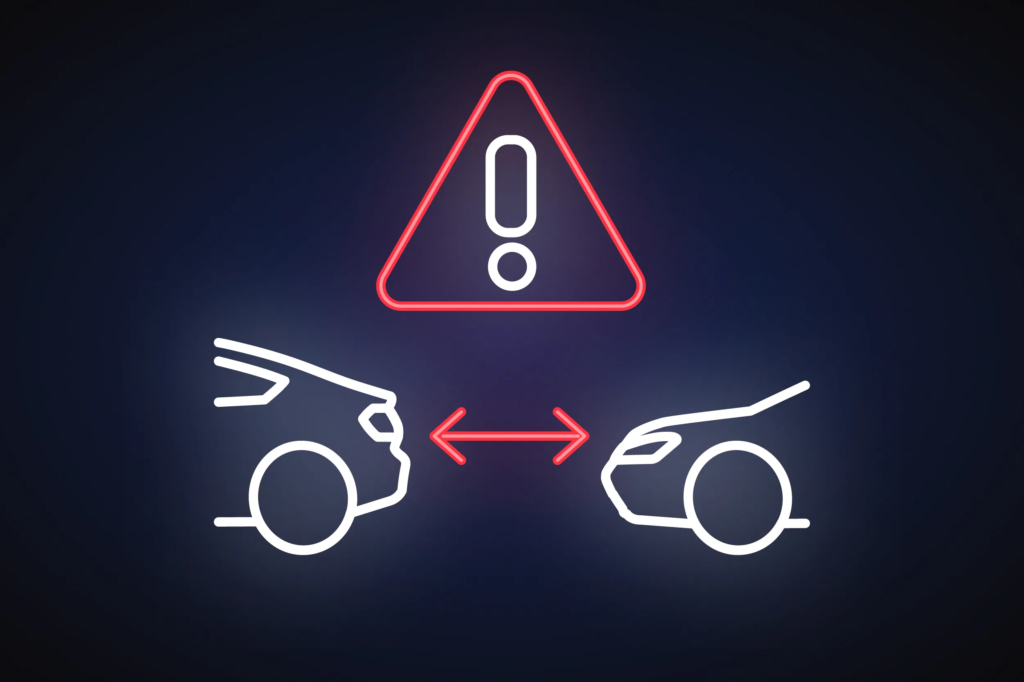
Forward Collision Warning (FCW) systems are a vital component of modern vehicle safety technology, designed to prevent accidents by alerting drivers to potential front-end collisions. As part of the broader spectrum of advanced driver assistance systems (ADAS), FCW plays a crucial role in enhancing road safety and reducing the risk of accidents. By providing timely warnings, FCW systems help drivers take corrective action before a collision occurs, significantly improving overall driving safety. Here’s an in-depth look at how Forward Collision Warning works, its benefits, and its limitations.

1. How Forward Collision Warning Works
Forward Collision Warning systems utilize a combination of sensors, cameras, and sophisticated algorithms to detect potential collision threats and alert drivers. Here’s a breakdown of how the technology functions:
- Sensors and Cameras: FCW systems are equipped with radar sensors and cameras mounted on the front of the vehicle, often near the windshield or grille. These sensors continuously monitor the road ahead, scanning for vehicles, obstacles, or pedestrians.
- Collision Detection: The system analyzes the data collected by the sensors to assess the distance and speed of objects in the vehicle’s path. By evaluating the closing speed and trajectory, the system determines if a collision is imminent.
- Alert Mechanisms: When the FCW system detects a potential collision, it activates an alert to notify the driver. Common alert methods include visual warnings on the dashboard, audible alarms, and tactile feedback, such as steering wheel vibrations. These alerts are designed to grab the driver’s attention and prompt an immediate response.
- Integration with Other Systems: Many FCW systems are integrated with additional safety features, such as Automatic Emergency Braking (AEB) or Lane Departure Warning (LDW). This integration provides a comprehensive safety net, enhancing overall vehicle awareness and collision prevention.
2. Benefits of Forward Collision Warning
Forward Collision Warning systems offer several significant benefits that enhance driving safety and reduce the likelihood of front-end collisions:
- Enhanced Safety: FCW systems significantly improve safety by providing timely warnings of potential front-end collisions. This early alert allows drivers to take evasive action, such as braking or steering, to avoid or mitigate the impact of a collision.
- Reduced Risk of Accidents: By alerting drivers to potential collision threats, FCW systems help reduce the risk of accidents caused by sudden stops, inattention, or impaired driving. This proactive approach enhances overall road safety and minimizes the likelihood of front-end crashes.
- Increased Driver Awareness: FCW systems contribute to greater driver awareness by providing real-time feedback on potential hazards. This increased awareness helps drivers stay alert and make more informed decisions, especially in high-traffic or challenging driving conditions.
- Support for Safe Driving Practices: FCW encourages safer driving habits by integrating advanced technology with human driving. The system supports attentive driving and complements safe driving practices, contributing to overall road safety.
3. Limitations of Forward Collision Warning
While FCW systems offer substantial benefits, they also have limitations that drivers should be aware of:
- Performance in Adverse Conditions: The effectiveness of FCW systems can be impacted by adverse weather conditions, such as heavy rain, fog, or snow. Reduced visibility or sensor obstructions can affect the system’s ability to detect potential collisions accurately.
- Detection Range and Accuracy: The performance of FCW systems can vary depending on the range and accuracy of the sensors and cameras. The system may have difficulty detecting objects at extreme angles or in low-light conditions.
- Driver Reliance: There is a risk that drivers may become overly reliant on FCW, leading to reduced attention and vigilance. FCW is a supplementary safety feature and should not replace active driving and awareness.
- False Alerts: FCW systems may occasionally issue false alerts if they detect objects or vehicles that are not in the immediate path of the vehicle. Drivers should be prepared to interpret and respond to alerts appropriately.
4. Best Practices for Using Forward Collision Warning

To maximize the benefits of Forward Collision Warning and ensure its effective operation, consider the following best practices:
- Understand Your System: Familiarize yourself with the specifics of your vehicle’s FCW system by consulting the owner’s manual. Understanding how the system operates and what to expect from its alerts will help you use it more effectively.
- Maintain Sensor Cleanliness: Keep the radar sensors and cameras clean and free from obstructions. Regularly check for any dirt, ice, or snow that could affect the system’s performance and accuracy.
- Combine with Safe Driving Habits: Use FCW as a complementary tool to support safe driving practices. Continue to stay attentive to the road, maintain safe following distances, and avoid distractions.
- Be Aware of System Limitations: Recognize the limitations of FCW and adjust your driving behavior accordingly. Understand that FCW may not detect every potential hazard and that driver attentiveness remains essential.
5. Conclusion
Forward Collision Warning systems are a crucial advancement in vehicle safety technology, designed to alert drivers to potential front-end collisions and enhance overall road safety. By providing timely warnings, FCW systems help prevent accidents and reduce the severity of crashes, contributing to a safer driving experience. Understanding how FCW works, its benefits, and its limitations allows drivers to make the most of this technology while maintaining active driving vigilance. As automotive technology continues to evolve, FCW remains a key component in improving road safety and protecting drivers, passengers, and other road users.





